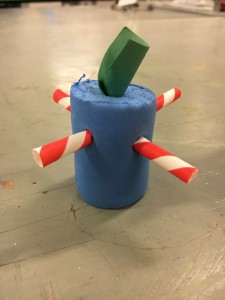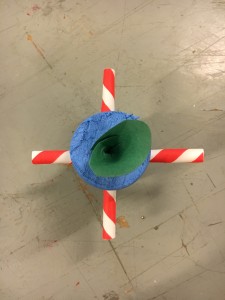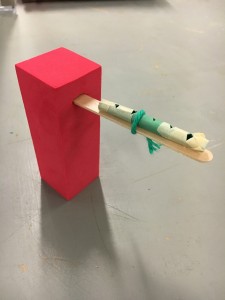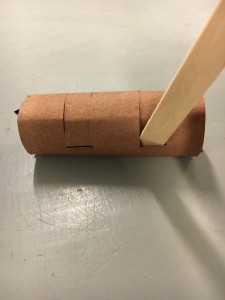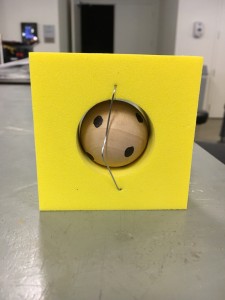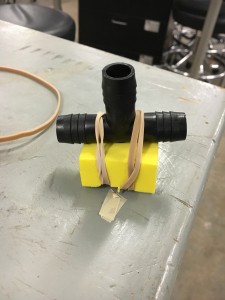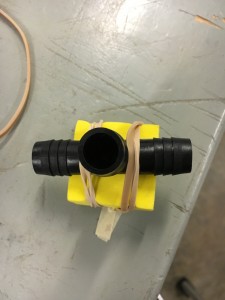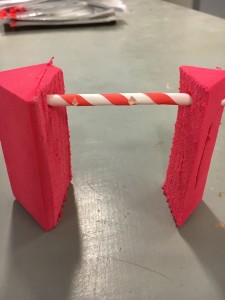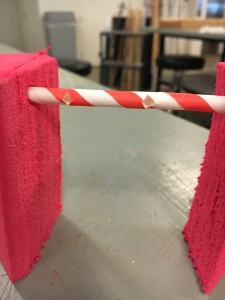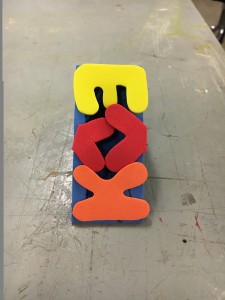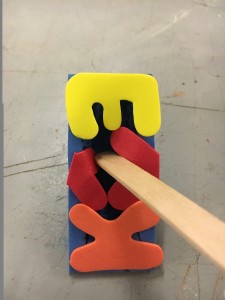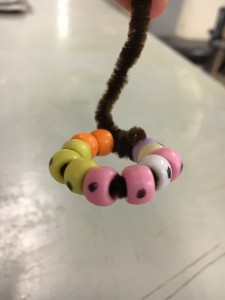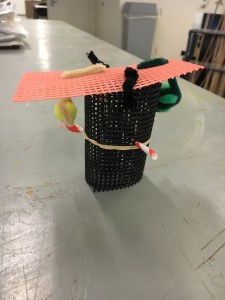For our second assignment, we were challenged to brainstorm and create low fidelity prototypes of different enrichment devices to stimulate the two anteaters, Pablo and Olive, at the Houston Zoo.
I’ve only seen an anteater once before so I decided to turn to the internet for some more information regarding an anteater’s habitat, behavior and diet. I found many interesting facts online (like the fact that some species of anteaters can climb trees!) and incorporated them into my designs. But, before I began brainstorming different solutions, I came up with some constraints and objectives that I want my designs to follow.
Constraints:
- must not pose any threat or danger to the anteaters
- must withstand Houston’s unpredictable weather and last up to 3 years
Objectives:
- will keep anteaters stimulated for extended periods of time
- device would allow them to mimic their behavior in the wild
With those in mind, I began drawing some possible solutions in my notebook.
And here are my low fidelity prototypes!
Component Idea #1
The most fascinating part of an anteater’s anatomy is their tongues. When fully extended, their tongue can reach 18 inches beyond the length of its skull! This is why anteaters utilize their tongues so much when feeding on ants and insects that hide inside anthills or fallen trees. So, my first component idea is a food dispenser that dispenses food through the long tubes that extend out of it. The anteaters can use their long tongues to reach the food inside the tubes. Zoo keepers can refill the dispenser with food pellets, ants and insects through the funnel on the top of the dispenser.
Component Idea #2
This component idea also utilizes the anteater’s long tongue but, this idea comes with a different challenge for the anteater. This device consists of a long, closed-ended tube with slits along its length that would allow the anteater to reach the food hidden inside. However, this device is meant to be placed on a tree branch so that the anteater will have to put in some extra effort to get its treat and also so that it won’t be too easy for them to find. The anteaters would have to be in constant pursuit to find these treats!
Component Idea #3
Anteaters will use their sharp claws to tear open anthills and rotting wood that may contain ants or termites. To allow anteaters to mimic this type of behavior, I came up with a component idea that consists of a closed-ended tube, designed to look like a rotting tree trunk, with flaps on its exterior. To reach the food inside the device, the anteater must use its claw to push open the flap and access the food (I used a popsicle stick to show how the flaps would work when an anteater reaches in). The flap works just like the ones people put on their door to allow their pet dog to come in and out of their house. Also, it would return to its original position once the anteater removes its claws from the interior of the device.
Component Idea #4
My fourth component idea is a hollow ball inside a case. The ball has holes in its exterior so that when it is rotated, some of the food pellets placed inside falls out. The anteater can use its claws to rotate the ball inside the casing to dispense the food hidden inside.
Component Idea #5
Anteaters love to climb trees and find comfortable, quiet places for them to cuddle up and rest. This component idea I came up with is essentially a playground for anteaters. It has a ramp that the anteaters could use to climb up the structure and its bridge-like structure gives the anteater shade and shelter under it.
Using these component ideas, I came up with 5 complete solutions that incorporated at least one of my 5 component ideas.
Complete Solution #1
My first complete solution incorporated the first component idea. From my research, I found that anteaters like to swim so I wanted to come up with a solution that makes use of the pond in the anteater’s enclosure. The solution I came up with is a floating food dispenser. Similar to component idea #1, there are long tubes that extend out of the dispenser where the anteaters can reach in using their long tongues to get the food hidden inside. The dispenser would be mounted on a floatation device so that it does not sink when the anteater mounts the platform.
Complete Solution #2
My second complete solution incorporates the 2nd component idea. In this solution, the tube with slits is elevated on two bars that places it high enough above the ground that the anteater can only reach its contents by extending their tongue into the device. The advantage of using this design is that the device can be placed close to where the zoo visitors would stand so that they could have a better view of the anteater in action.
Complete Solution #3
For my third complete solution, I took my component idea (#3) that incorporated flaps onto a device mimicking a fallen tree trunk and made it so that it could float on water. Food pellets can be placed inside the device to attract the anteaters towards it.
Complete Solution #4
Component idea #4 was one of my favorite solutions that I came up with. Since that device was initially meant to rest on the ground, I wanted to develop a complete solution that zoo keepers would be able to hang on tress and is small enough so that it could be moved around easily. Complete solution #4 is what I came up with. It is a hoop attached to a hook with balls covering it. The balls have a hole (the black dots drawn on the beads) that would dispense food pellets when rotated by the anteater. More balls means that more food would be dispensed to keep the anteater engaged for a longer period of time. The device is much smaller relative to its component idea making it a more durable device that could easily be taken down from the tree branch it is hanging on for maintenance.
Complete Solution #5
For my final complete solution, I wanted to incorporate as many component ideas as I could onto the device, without sacrificing any of the objectives. What I came up with was a large tree-like structure made of mesh. I made it purposely out of mesh so that devices such as complete solution #4 and feeding tubes/dispensers can be attached and detached onto it easily. This versatile device allows zoo keepers to customize the enrichment devices they want to attach onto it so that the activities won’t be too repetitive for the anteaters.
I personally enjoyed having to brainstorm and prototype ideas for this project. There were times when I hit a wall brainstorming ideas for this enrichment device but once I did more research into the natural behaviors of an anteater, I realized that the possibilities were endless and that I could modify devices used to stimulate other types of animals (such as the dog door flap and the Kong toy) for the anteater.

